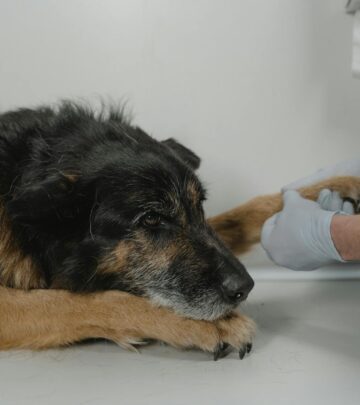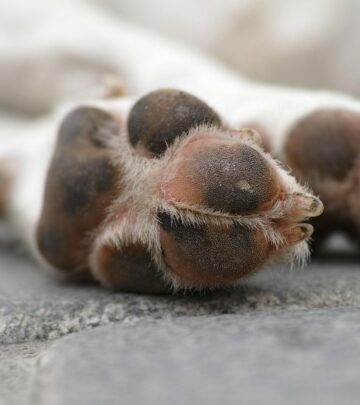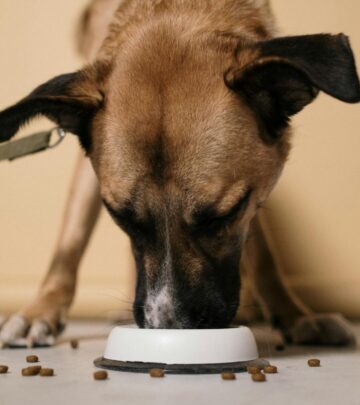Diatomaceous Earth for Dogs: Benefits, Uses, and Safety Guidelines
Keep your pet healthy and itch-free without harsh chemicals or expensive treatments.

Diatomaceous Earth for Dogs: An In-Depth Guide
Diatomaceous earth has gained popularity among pet owners seeking natural alternatives for pest control, particularly for managing fleas. This guide explores its origins, benefits, uses, side effects, and best practices for keeping your dog safe and healthy.
What Is Diatomaceous Earth?
Diatomaceous earth (DE) is a naturally occurring, powdery substance derived from the fossilized remains of microscopic aquatic organisms called diatoms. These diatoms accumulate in aquatic sediments such as lakes and rivers, forming siliceous deposits over millions of years. The powder itself is rich in silica, and when viewed under a microscope, shows sharp, jagged particles reminiscent of glass shards .
- Consists primarily of amorphous silicon dioxide
- Formed from ancient algae encased in glass-like cell walls
- Extracted from both freshwater and marine environments
- Used in a variety of products: toothpaste, skincare, food, beverages, paint, and even explosives
How Does Diatomaceous Earth Work Against Fleas?
Unlike chemical pesticides that poison or paralyze parasites, diatomaceous earth acts via a mechanical process. Its minute, glass-like shards damage the exoskeleton of fleas and other insects on contact .
- Absorbs oils and fats from the parasite’s outer layer
- Causes the pest to dehydrate and die
- Affects both adult insects and larvae
- Does not rely on chemical toxicity
Types of Diatomaceous Earth
Two main types of diatomaceous earth are relevant for pet owners:
- Food Grade Diatomaceous Earth: Purified, safe for internal and external use around pets and people.
- Filter Grade (Industrial) Diatomaceous Earth: Contains higher levels of crystalline silica and is intended solely for industrial filtration purposes. This type is toxic for pets and humans and should never be used in the home.
| Type | Main Use | Safe for Dogs? |
|---|---|---|
| Food Grade | Flea control, livestock feed additive, some human consumption | Yes |
| Filter Grade | Swimming pool filtration | No |
Benefits of Diatomaceous Earth for Dogs
Many pet owners consider diatomaceous earth for a variety of holistic health reasons:
- Natural Flea and Tick Control: Kills fleas, ticks, lice, and mites on contact by damaging their exoskeletons .
- Low Risk for Chemical Sensitivities: Contains no synthetic chemicals or insecticides.
- Low Cost and Ease of Use: Readily available online and at health stores at an affordable price .
- Multi-Purpose: Can be used in the home and on pet bedding to provide broad-spectrum pest control.
How to Use Diatomaceous Earth for Flea Control on Dogs
Proper application is crucial for safety and effectiveness. Below are essential steps for using food-grade diatomaceous earth on your dog:
- Consult Your Veterinarian: Always consult a vet before starting any new pest control regimen, especially if your dog has health conditions or is pregnant.
- Preparation:
- Ensure the product is labeled food grade
- Use gloves to avoid skin dryness
- Application:
- Lightly dust your dog’s coat by either sprinkling or rubbing a small amount of the powder into their fur, focusing on trouble spots like behind the ears, under the arms, and along the back.
- Take care to avoid the dog’s eyes, nose, mouth, and genitals as the powder can irritate mucous membranes.
- Let the powder sit for a few hours before bathing or brushing it out. Repeat the process as needed, typically over several days to break the flea life cycle.
- Environmental Treatment:
- Sprinkle diatomaceous earth on bedding, carpets, and areas frequented by your dog. Leave for 24–48 hours, then vacuum thoroughly.
- Reapply weekly or as recommended during peak flea season.
Safety Tips
- Use Only Food-Grade Products: Never use pool or industrial grade DE on or around pets.
- Avoid Inhalation: Both dogs and humans should avoid breathing in the fine particles.
- Monitor for Irritation: Watch for redness, sneezing, or respiratory issues after application.
Other Uses of Diatomaceous Earth
Diatomaceous earth is not just for flea control. Its versatility extends to the following:
- Gastrointestinal Parasite Management: Occasionally used as a natural dewormer, though veterinary evidence is limited and best discussed with your vet.
- Home and Garden Pest Control: Controls a wide range of household and garden bugs.
- Food Storage: Used to deter pests in stored grain products.
- Environmental Cleaner: Sometimes used as a mild abrasive in cleaning products due to its absorbent quality.
Potential Side Effects and Risks
Diatomaceous earth is generally considered safe when used properly, but several precautions should be noted:
- Inhalation Hazards: Fine, powdery particles may cause respiratory irritation in both dogs and humans if inhaled during application. Always apply in a ventilated area and avoid dust clouds.
- Skin and Eye Irritation: May cause dryness, itching, or redness if it contacts eyes or is left on sensitive skin too long.
- Digestive Concerns: If accidentally ingested in large amounts, it could cause mild gastrointestinal upset (vomiting or diarrhea). Use only the smallest effective dose recommended by your vet.
- Repeated Exposure: Prolonged and excessive exposure may increase the risk of irritation or inhalation issues.
If your dog shows any signs of discomfort, irritation, persistent coughing, or respiratory distress, stop use and consult a veterinarian promptly .
Should You Use Diatomaceous Earth for Your Dog?
While diatomaceous earth provides a chemical-free option for pest control and has a strong safety record when used with caution, it is not a cure-all. It works best as part of an integrated pest management approach:
- Maintain good hygiene and regular grooming
- Keep bedding clean and wash fabrics frequently
- Use environmental flea control measures
- Consult with your vet before using any product, especially on puppies, elderly, sick, or pregnant dogs
Veterinarians may recommend combining diatomaceous earth with other approved flea control methods for optimal effectiveness and safety.
Frequently Asked Questions (FAQs)
Q: Is diatomaceous earth truly safe for all dogs?
A: Food grade diatomaceous earth is generally regarded as safe for use around dogs. However, dogs with respiratory issues, open wounds, or sensitive skin may be more prone to irritation. Always consult your veterinarian before use, especially in special cases.
Q: Can I use diatomaceous earth on puppies and pregnant dogs?
A: Caution is advised. While food-grade DE is less likely to cause problems, younger puppies and pregnant dogs can be more sensitive to powders and inhalation risks. Veterinary consultation is essential before use in these cases.
Q: Does diatomaceous earth kill only fleas?
A: It effectively kills fleas, ticks, lice, and mites by physically damaging their exoskeleton. It can also help reduce other insects like ants and bedbugs in your environment.
Q: Is it safe for my dog if they lick or ingest a small amount during grooming?
A: Small, incidental amounts of food grade DE are not likely to be toxic, but ingestion of large quantities can cause digestive upset. Always use just enough to treat the problem area, and avoid over-applying.
Q: How long does it take diatomaceous earth to kill fleas?
A: Fleas can begin to die within hours of contact, but to break the flea cycle, DE should be used for at least a week, with reapplication as needed. Environmental cleanup (vacuuming and washing bedding) should be part of the process.
Final Tips for Pet Owners
- Always Choose Food-Grade: Verify labels before purchase and use.
- Moderation Is Key: More powder is not better; use the minimal effective dose.
- Clean Up Thoroughly: Vacuum up unused powder from surfaces and wash pet bedding regularly.
- Health Monitoring: Keep a watchful eye on your dog for any adverse reactions and seek prompt advice from your vet if issues arise.
For many pet owners, diatomaceous earth offers a budget-friendly, non-chemical option for flea and pest management. When used correctly, it helps support a clean, comfortable environment for your dog—and peace of mind for you.
References
Read full bio of medha deb















Community Experiences
Join the conversation and become a part of our empowering community! Share your stories, experiences, and insights to connect with other beauty, lifestyle, and health enthusiasts.